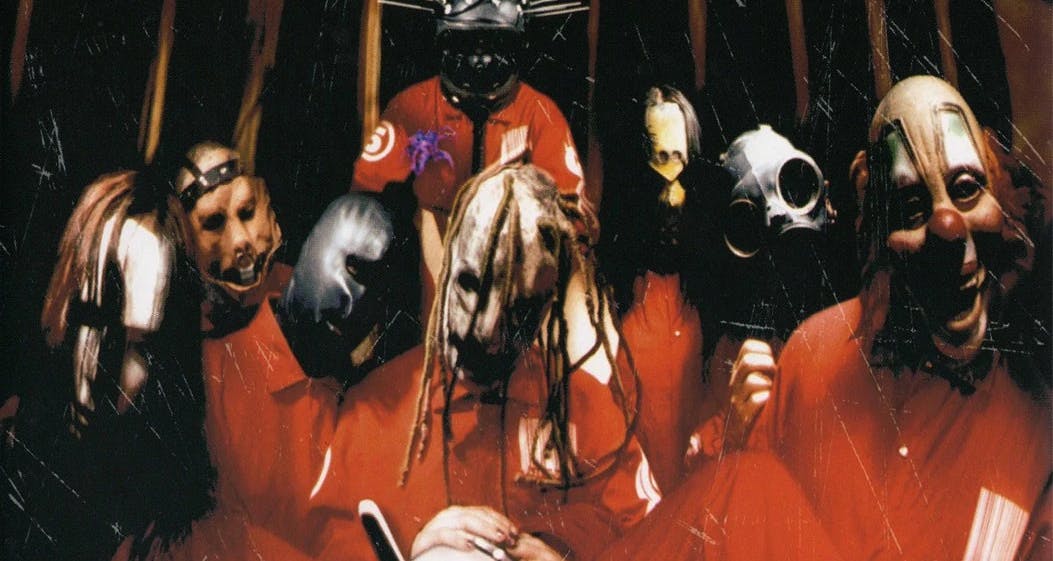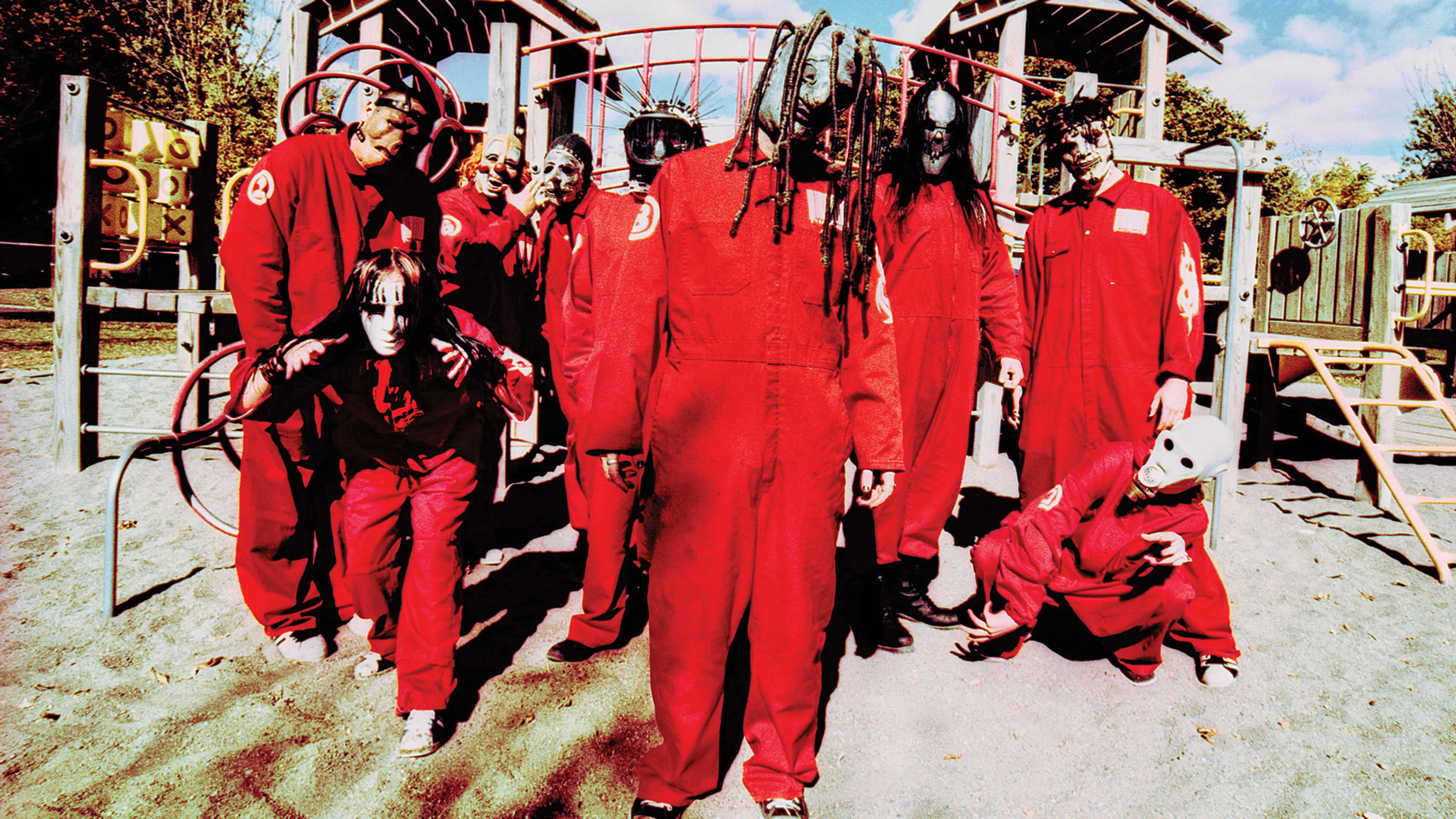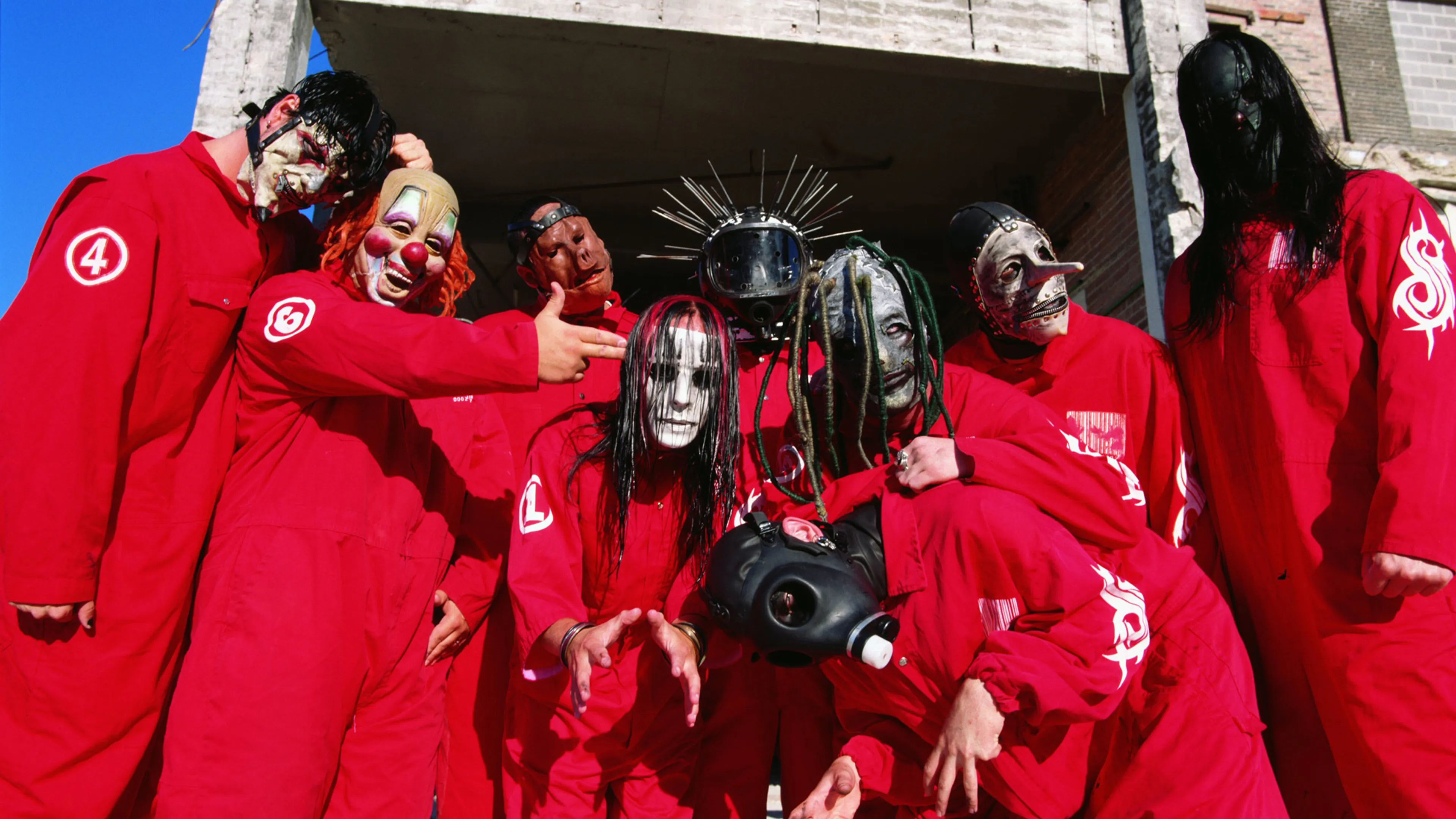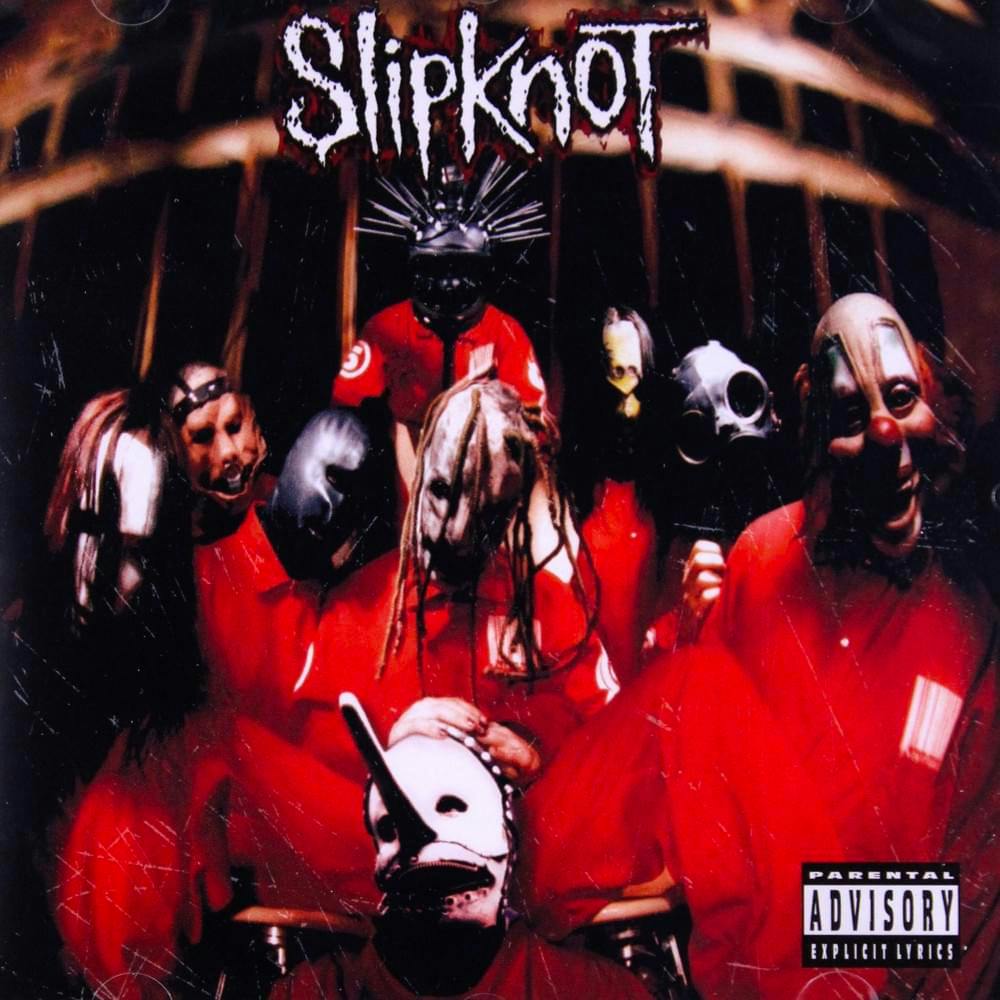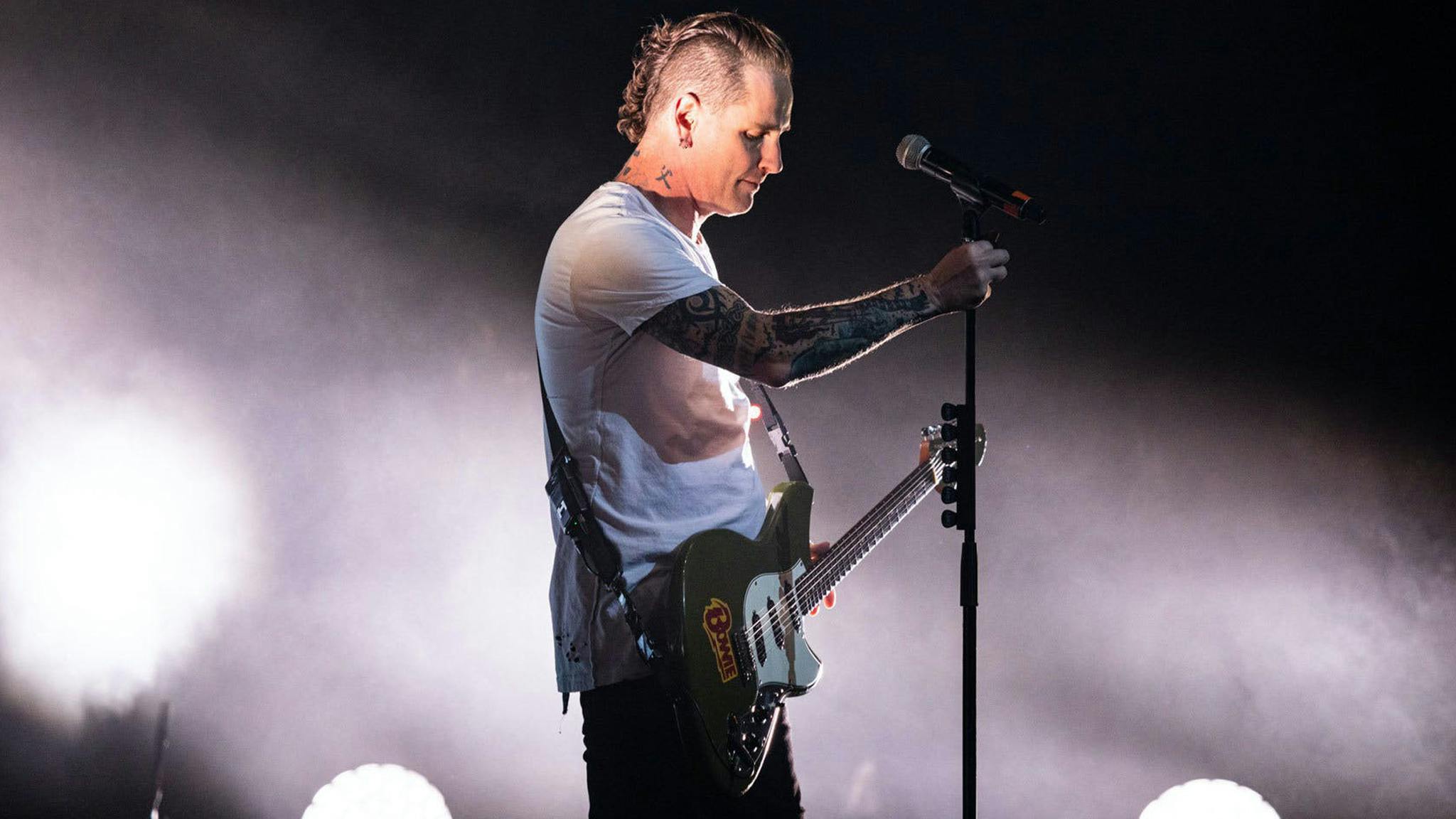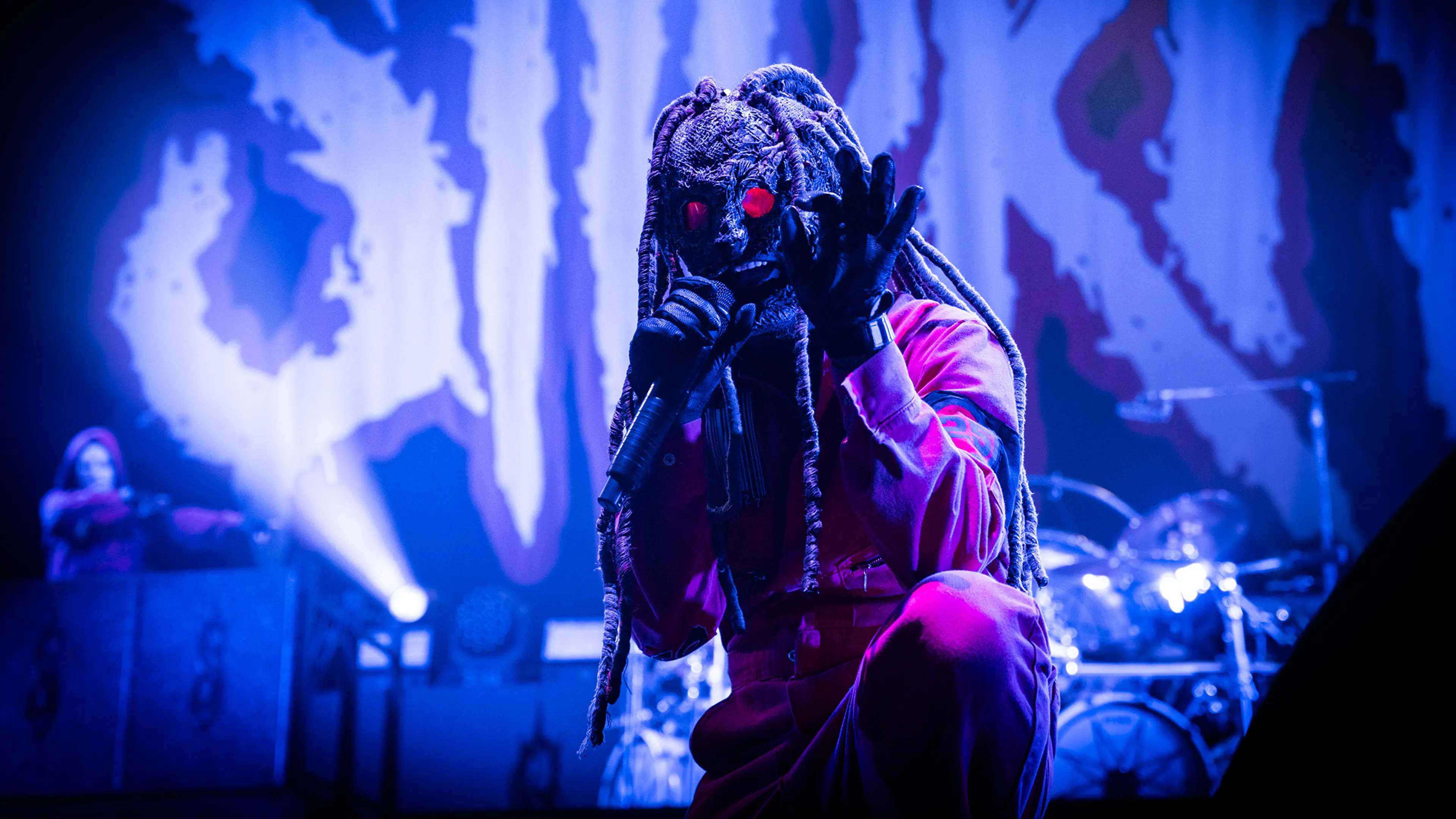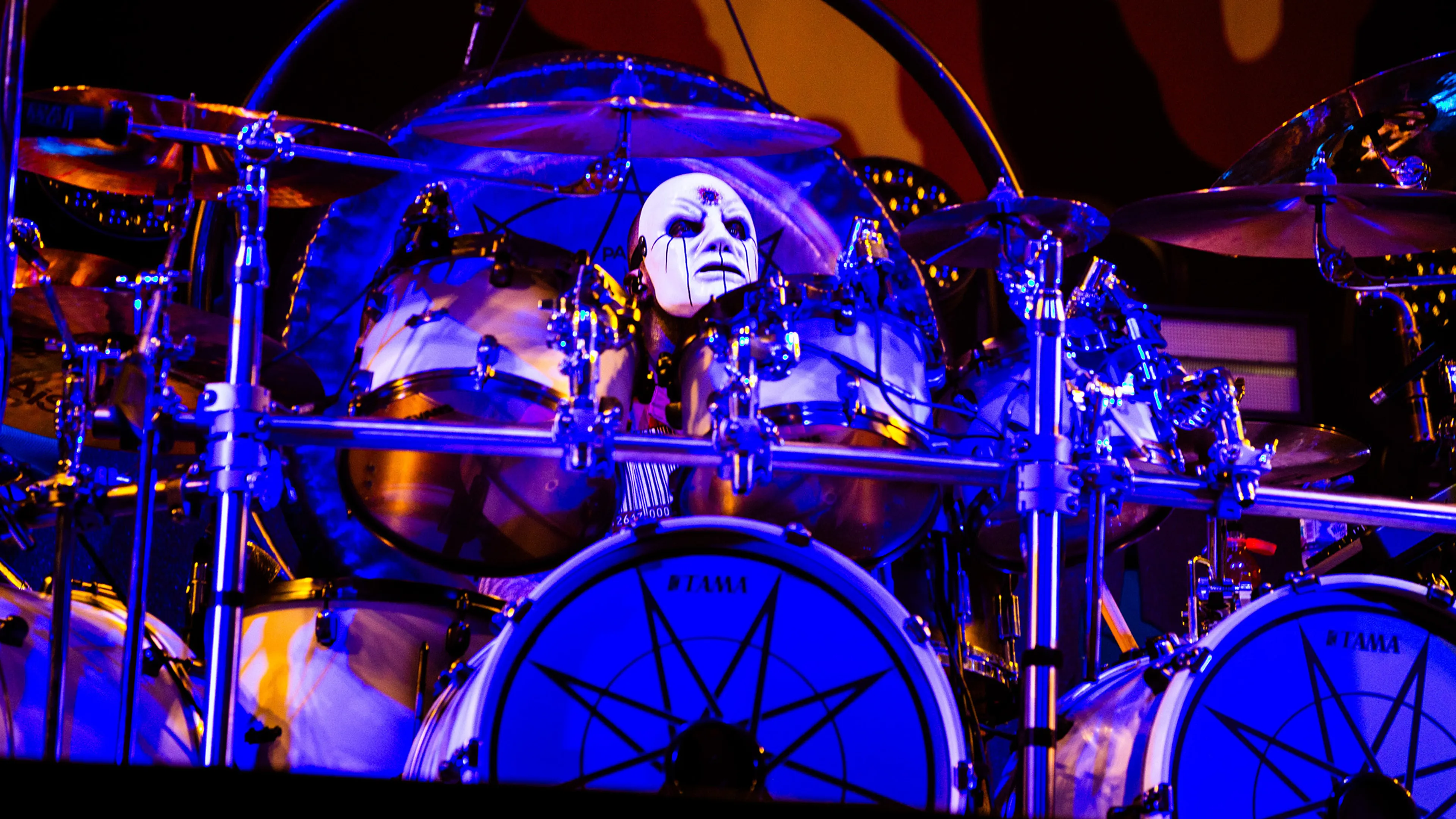Corey’s first gig with Slipknot took place on August 24, 1997, a charity all-dayer held at the Safari Club, a live music venue Shawn Crahan had taken ownership of six months previously. A 45-minute video of the performance was uploaded online exactly 20 years later, in August 2017. It’s a fascinating historical document. The footage begins, creepily, with a masked man handing out soft toys to the audience, before Shawn Crahan – wearing a Clown mask – attacks his beer keg drums with an angle grinder and Corey Taylor zombie-walks to the mic, in a priest’s frock coat, with liquid latex Xs drawn on his eyes and mouth. The 11-song set commences with the band’s theme song Slipknot, later reworked as (sic), with Me Inside, Prosthetics and Only One among the stand-out tracks. Corey speaks only once, to mention the purpose of the gig, and salute the crowd for “showing that all you fuckers care about what happens in this goddamn town”. Both those in attendance, and those onstage, knew that something had changed forever.
In November 1997, Shawn Crahan sold the Safari Club to focus on Slipknot full-time. The band now had a manager, local DJ Sophia John, and were practising up to five times a week. As and when they could afford studio time, they would return to SR Audio to have Corey re-record Anders Colsefni’s vocals on pre-existing demos. They were also refining the idea of Slipknot. Each member already had their own bespoke mask – now it was agreed that the band would dress uniformly in coveralls, labelled with the barcode of Mate. Feed. Kill. Repeat.. “That’s when the numbers started coming up,” recalled Corey. “We were like, ‘Fuck our names, fuck the bullshit. Let’s go by numbers.” Corey became #8, Shawn #6, Joey #1.
As talk turned to making a second album, Sophia John asked the group, “If you could have anyone hear you, who would it be?” The unanimous choice was producer Ross Robinson. Having produced Korn’s first two albums, Sepultura’s Roots and Limp Bizkit’s Three Dollar Bill Y’All$ debut, Texas-born Ross was fast carving out a name for himself as the hottest studio technician in metal. Such was his reputation and golden touch that Roadrunner Records had newly granted the producer his own label imprint, I Am, for which he would be given complete autonomy to scout, sign and produce three new acts per year. Ross had made Amen – a ferocious, nihilistic punk-metal quintet fronted by former skateboarder Casey Chaos – the first signing to his label, and he was on the lookout for more fresh blood. A new four-track Slipknot demo landed on his desk at just the right time.
On February 2, 1998, for the first time, Ross Robinson witnessed Slipknot play to a live crowd. The Safari Club was packed when the band stormed into the venue through the rear doors.
“They barged through the crowd like destructors,” he marvelled. “Joey was on Mick’s shoulders, kicking people and hitting them on the back of the head. They were ready to rip their audience apart.”
Blown away by what he saw, Ross agreed to work with the band. There was just one snag: as he was already committed to producing new albums from Amen, Machine Head and, er, Vanilla Ice, Slipknot would have to wait up to 10 months before commencing work with him. Every few weeks, an excitable Joey Jordison would place a call to California, asking Ross if he had a date in mind yet. Each time the reply would be, “No, not yet Joey, I’ll let you know.”
On September 23 Joey checked in again. “You know what?” said Ross. “Fuck it. Drive out here now.”
